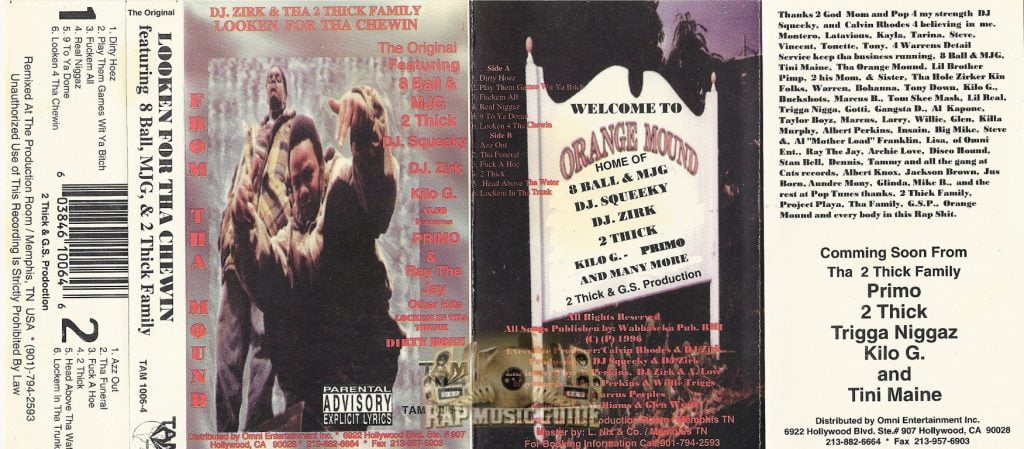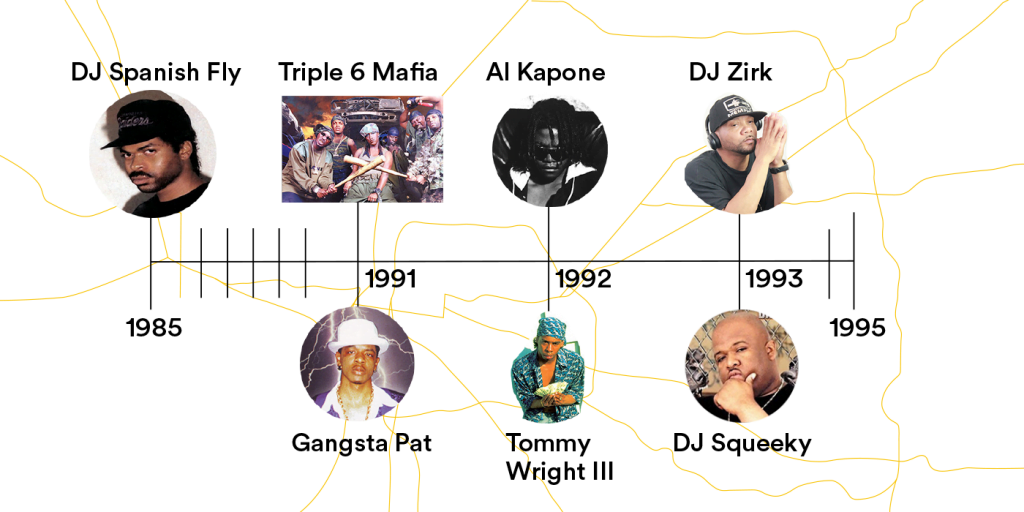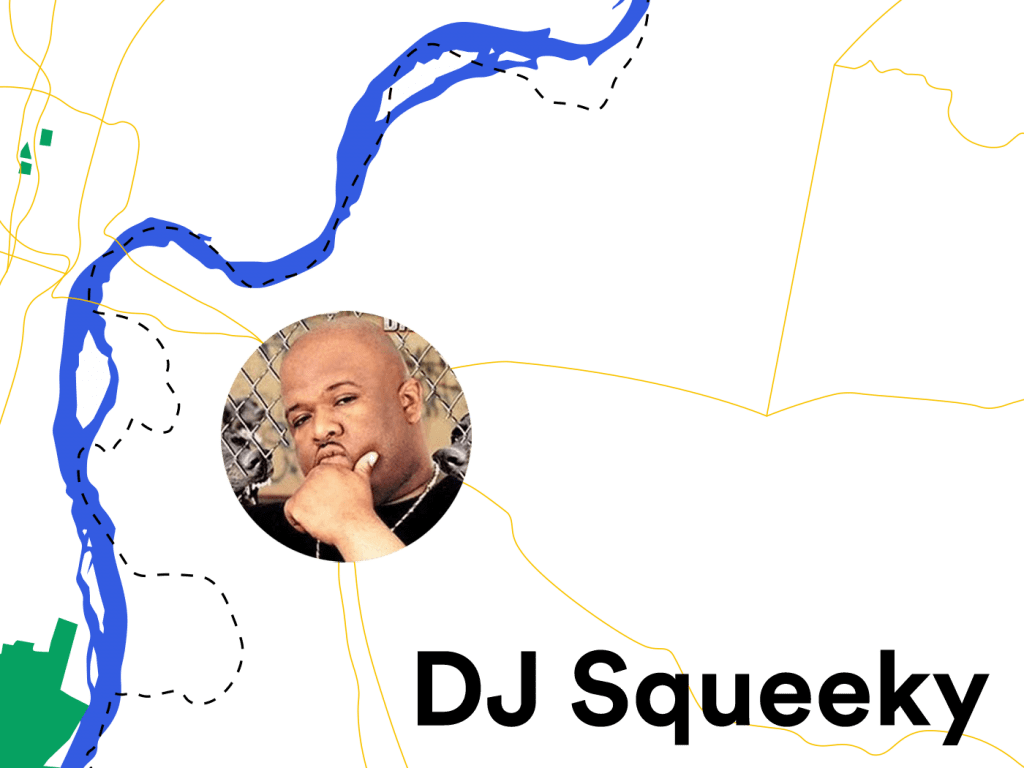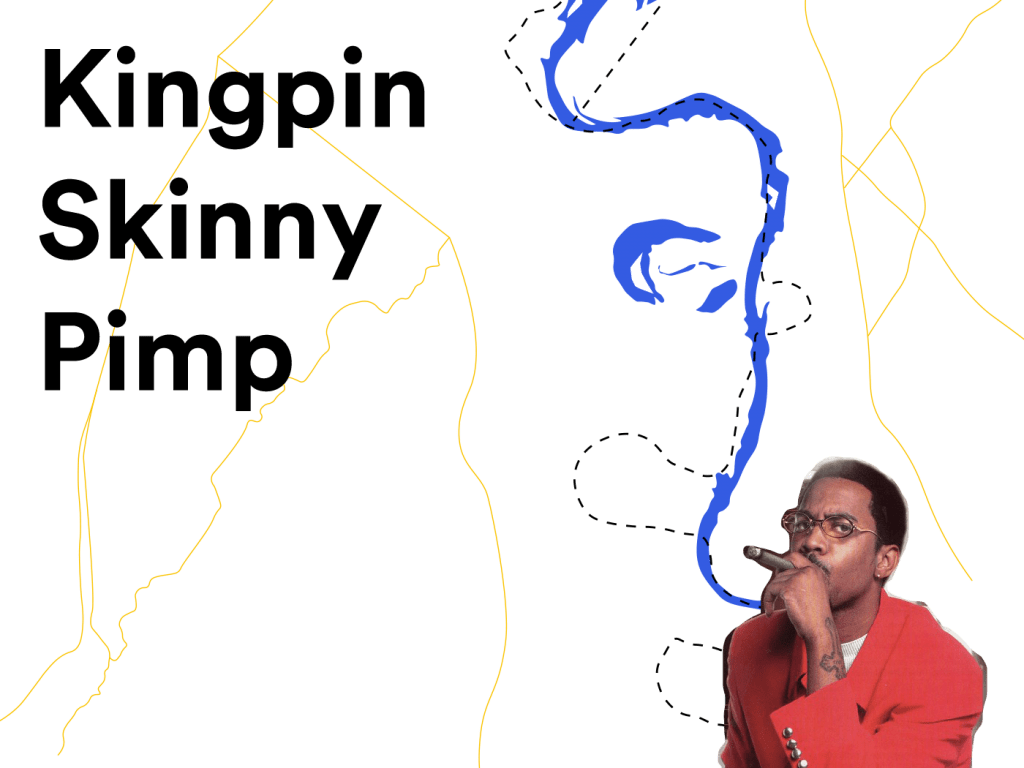In the first of this two-part series, we’re taking a deep dive into the beginning of Memphis hip-hop and some of the most influential artists.
Many Memphis hip-hop legends still do not have Wikipedia pages – the entire genre gets only two paragraphs. Up until recently, you couldn’t find their music online either; it existed only on old cassette tapes, recorded in its 90’s heyday.
If you do scour the internet, you can patch together the history of the genre. Despite being underrated and unknown, its outsized influence can be heard throughout modern hip-hop and trap music. You just need to turn on the radio.

Recent releases from A$AP Rocky, J. Cole, 21 Savage, Megan Thee Stallion and Cardi B reveal how influential these Memphis artists are today.
For example, in August A$AP Rocky released Babushka Boi which directly samples Memphis rap group Da Crime Click.
But A$AP’s track is undeniably in the vibe of Tommy Wright III, one of his influences and a Memphis icon. In the track below you can hear fast-paced syncopated cowbells leaning heavily on electronic drum sounds. This is one of the defining features of Memphis hip-hop production. While the two coasts relied on Motown and soul samples for their boom-bap beats, Memphis was all about the drum machine.

At the end of the ’80s, young people were tired of the upbeat electro-funk tunes that had defined the decade so far. The music of their parents’ generation was out of sync with reality in Memphis. Pioneers like DJ Spanish Fly, an electro DJ playing at clubs in Memphis, wanted that gritty reality represented in the music.

These early mixtapes created by DJ Spanish Fly inspired local artists to grasp hold of this new style. The resulting sound quickly evolved into something different; mind-bending, bleak, and incredibly creative.
Memphis rap has a triplet flow that lends itself to a halftime beat. This triplet flow has become popular in modern hip-hop with artists including Migos, Yo Gotti, Lil Uzi Vert, Kanye West, and many more.
Repetitive vocal hooks are warped and distorted to create a hypnotic, otherworldly atmosphere. And the lyrics are uniquely morbid and graphic. This is not your mom’s Zapp and Roger record.

Early recordings were made in bedroom studios using 4-tracks and drum machines, forcing producers to experiment and push the limits of their equipment. This DIY attitude and aesthetic created an independent and underground local music scene. This genre was more punk rock than major label hip-hop, able to evolve on its own creative terms. However, this lead to the genre remaining intensely local and ignored on the two coasts.
Another way in which production style diverged in Memphis was its preference for programmed drums, usually in halftime. DJ Spanish Fly introduced the booming sub-bass and synthetic sound of the iconic TR-808. While the 808 wasn’t the only drum machine used, elements like the cowbell, syncopated rhythms, powerful sub-bass, and sharp digital snares became the backbone of Memphis production style.
Memphis producers didn’t abide by common ‘rules’ around sampling. They preferred to loop rather than chop their samples and found inspiration in unusual places – like film scenes and horror soundtracks. Producers were not afraid to use the same samples or to sample each other’s tracks.
Once an album or a mixtape was completed, producers and rappers would swing by local car stereo shops to sell their cassette tapes in bulk. Cassette tapes were also sold at clubs and schools. Few tapes made it out of the Tennessee-Arkansas-Mississippi tri-state area. The tapes that are left today sometimes show up in marketplaces such as Discogs. They are extremely rare, in a degraded condition, and fetch high prices among collectors.

Memphis Hip-Hop Heroes
Here are the key players in early Memphis hip-hop, gangster rap and horrorcore.

Without a doubt, DJ Spanish Fly is the Godfather of Memphis hip-hop.
In the late ’80s, Fly got into music and dropped out of high school to became an electro DJ. At that time, local clubs were packed, but they were playing tracks like Set it Off, disco, and R&B chart-toppers.
But times and tastes were changing in the transition between the ’80s and ’90s. DJ Spanish Fly wanted people to get buck in the club to grittier music; literally buckin, jookin, choppin, gangsta walkin were all dance styles that emerged in Memphis at this time. He started putting his own music into the club mixes and creating mixtapes to sell to his fans.
DJ Spanish Fly embodies the transition between the ’80s electro-funk and the grit of ’90s hip-hop. His tracks have an ominous, otherworldly atmosphere pierced by thumping 808s. He quickly became a Memphis icon, inspiring younger artists to follow in his footsteps.
Fly also pioneered the Triggerman Beat which is one of the most important hip-hop breaks ever. According to WhoSampled it’s been sampled hundreds of times, including recent tracks by Drake (Nice for What and In My Feelings), Gucci Mane, Kanye West, T.I., Lil Wayne, Death Grips, and many more…

Gangsta Pat’s father was a drummer with many famous bands, including Isaac Hayes’ The Movement. His early life was tumultuous with family drama, his parents’ divorce, and running afoul of the law.
At 18, he released #1 Suspect, the first Memphis rap record issued by a major label. Although he was dropped by the label, he released nine more albums and became a regional icon.

A native of Orange Mound, DJ Squeeky grew up playing drums at church. He was surrounded by friends, family and neighbors making music in all forms. But the person he really looked up to was DJ Spanish Fly.
DJ Squeeky wanted to start making mixtapes like Fly. Since all his friends wanted to rap, he decided to get into the production side. He set up a small studio in his bedroom; a mic, 4-track, and drum machine. His sharp signature sound attracted all the local rappers to his bedroom studio. For a while, DJ Squeeky was the go-to producer in Memphis.
(Good luck ever getting this song out your head.)
In an interview, DJ Squeeky was asked how long it takes to produce a track:
A few minutes. It all depends on what level I’m on. If I’m on a good level and got some good cheeba, it’s going to be a couple seconds. I know a few musical notes, but my music is based off feel, how I’m feeling at that moment, what I’m on at that moment.
DJ Squeeky interviewed for the Memphis Flyer
More recently, DJ Squeeky has produced for Young Dolph, Gucci Mane, and 2 Chainz.

Also from Orange Mound, DJ Zirk grew up near DJ Squeeky and collaborated with him many times.
DJ Zirk has made some of the most influential and most sampled tracks in the Memphis scene, but there’s virtually no info on him online. We hope to change this by interviewing DJ Zirk soon.

Inspired by listening to local artists like Gangsta Pat and Spanish Fly on the radio, Skinny Pimp went to work early, writing out his first raps in school. When DJ Squeeky pulled him into the studio in 1993 for the track Lookin For Tha Chewin, he was more than ready to start his career.
“When I went over to Squeeky’s house […] we weren’t really worried about no money. We was just doing it just cause we love it.”
Skinny Pimp in an interview with Hot 1079
Skinny Pimp became a local sensation doing club performances all over Memphis with DJ Paul, Juicy J (both original members of Triple 6 Mafia), and DJ Squeeky. His relationship with his first producer, DJ Squeeky, abruptly ended when they got into a fight at Club Memphis. After that, the scene split in two with DJ Squeeky and DJ Zirk on one side and Skinny Pimp, Juicy J, and DJ Paul on the other, exchanging diss tracks.
Despite going through tumultuous times, all these artists continued to put out some of their best work. Skinny Pimp’s 1996 album, King of Da Playaz Ball, is a masterpiece.
Skinny Pimp’s most apparent legacy is the popularity of his never-ending double-time flow, not only with younger Memphis rappers but throughout contemporary hip-hop. However, he regrets that many artists today who are influenced by his style neglect the origins, not only Skinny Pimp himself but the influential artists that came before him like DJ Ren.

Al Kapone’s 1994 release captures the spooky horrorcore sound unique to Memphis in the early 90’s.
He had some more mainstream success later in his career creating tracks for the films Hustle and Flow and Stomp the Yard.

Tommy Wright III is a pioneer of the fast paced flow that influenced Gangsta Rap, Crunk, and Trap.
When he decided to record his first album at the age of 15 he literally broke his piggy bank to get it done, recording all 8 songs for the album in one day.
I just went ahead and took a piggy bank full of nickels, dimes, quarters and pennies to [local producers] Lyrical Dope and Herbert Young,” he says. “They laughed at me when I cracked it open, but I told them I was serious and I needed to do some songs… I distributed Memphis Massacre by way of taking a backpack to school and selling them [there].
Tommy Wright III interviewed by Red Bull Music Academy
He had many run-ins with the law as a young teen, and his next album Runnin-N-Gunnin was released two years later in 1994 featuring his mugshot on the cover.

Tommy Wright III is a one-man gangsta rap machine, releasing five self-produced solo albums in only eight years and countless collaborations.
In 2001, his streak ended when he went to prison for four years. When he was released, he faced immense hardship after losing everything, which was in sharp contrast with his rising cult status on the internet. Recently, Tommy has experienced a surge in popularity amongst a new generation of fans, with sold-out shows all over the U.S. and Europe.

They started as a horrorcore style hip-hop group. Out of all the early 90’s Memphis rappers and producers, Triple 6 Mafia has achieved the most commercial success, including two platinum albums.
Juicy J has become particularly mainstream. He was signed with Columbia Records, featured on a Katy Perry track, had a chart-topper with Bandz A Make Her Dance, and has recently worked with Megan Thee Stallion, Young Thug, Nicki Minaj, Wiz Khalifa, and the $uicideboy$.
Some of the members of Triple 6 Mafia also had successful and influential solo careers, including Koopsta Knicca. His 1994 solo album Da Devil’s Playground shows off pretty much all the elements we talked about earlier – ethereal vocals, hypnotic repeated hooks, spooky samples, and the triplet flow characteristic of Memphis hip-hop.
We love the darkly hypnotic sounds of these artists and we hope you do too.
In Part II, we’re going to interview some Memphis legends and talk about production.
If you’re curious to find out more about Memphis hip-hop and listen to some music I’ve included links to articles, interviews, playlists, and a short documentary that I used to put this article together.
Resources:
Fu, Eddie. How Megan Thee Stallion Pays Tribute To Three 6 Mafia On Her Debut Album ‘Fever.’ 2019, genius.com/a/all-the-three-6-mafia-samples-on-megan-thee-stallion-s-fever
Goggans, Louis. Q & A with DJ Squeeky. 2012, memphisflyer.com/CallingtheBluff/archives/2012/12/13/q-and-a-with-dj-squeeky
Hebblethwaite, Phil. “808 State Of Mind: Proto-Crunk Originator DJ Spanish Fly.” The Quietus, 2011, thequietus.com/articles/05588-dj-spanish-fly-interview
MacAdams, Torii. Still Runnin-N-Gunnin: The Rebirth of Memphis Rap Legend Tommy Wright III. 2018, daily.redbullmusicacademy.com/2018/11/tommy-wright-iii
MacAdams, Torii. The Unsung Heroes of Early Memphis Rap. 2017, daily.redbullmusicacademy.com/2017/08/memphis-rappers
Meadows-Ingram, Benjamin. Loop History: The Showboys “Drag Rap,” AKA Triggerman. 2018, daily.redbullmusicacademy.com/2018/06/loop-history-triggerman
NTS Radio. DJ Spanish Fly. nts.live/shows/dj-spanish-fly
Real Memphis Juntz (Pimp Shyt & Devil Shyt). ugtapes.blogspot.com/
The Good Ol’Dayz. thegoodoldayz.com/
Turismo. WELCOME TO HELL: The History and Influence of MEMPHIS RAP (Documentary). 2018, youtu.be/u4gzwTgXrvk






